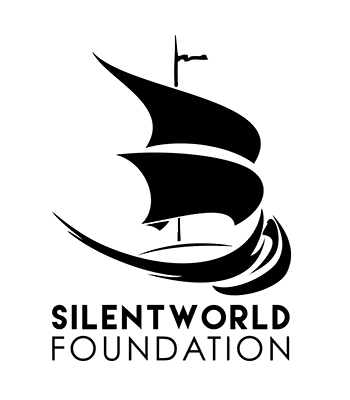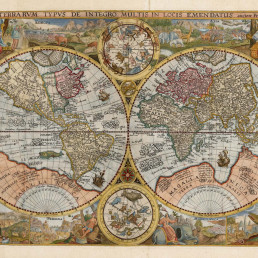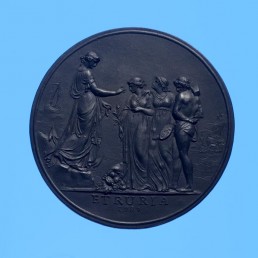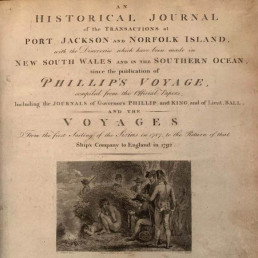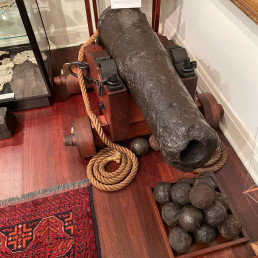
Name/TitleKethuba – First recorded Jewish marriage document in Australia
About this objectThe bride, Mary Connolly, was probably the first Gentile woman to be converted to Judaism in Australia.
The Kethuba follows the accepted traditional text in Aramaic as used since the Talmudic period throughout the Jewish world, with vowels added to facilitate reading. The calligraphy of the document suggests an expert scribe with knowledge of certain additional points which apply to Kethubot of proselytes only, possibly (Dayan) Rabbi Aaron Levy who had arrived in Sydney 6 months earlier, in December 1830, on a religious mission. Mary Connolly’s conversion was also most likely effected by the Rabbi late into his mission but he was probably not able to perform her wedding ceremony as well since, according to Halacha, a proselyte woman must not marry within three months of her conversion.
Rabbi Levy left Sydney in May 1831, the ceremony probably being performed by Phillip Joseph Cohen, whose signature is lower right on the document, and who held the Chief Rabbi’s authority to perform marriages. The remaining signatures on the Kethuba are those of the witnesses Moses Brown and Phillip Solomon. Brown was a free settler who came to New South Wales with his family in 1830. A dealer in jewellery and furniture in George Street he was, together with P.J. Cohen, a member of the first committee of the newly formed first Australian Congregation in 1832. Phillip Solomon was a member of the Committee of the Sydney Synagogue in 1845, and appeared in the list of citizens entitled to vote in the first election of the City of Sydney in 1842.
The groom, John Moses, and his two brothers Moses and Isaac were from London’s East End, the sons of Joseph Moses. Described by G.F. Bergman in the Australian Jewish Historical Society journal as ‘juvenile delinquents’, the brothers were transported to Australia; Moses in 1813, followed by John in 1820 and Isaac in 1822. All three became wealthy and respected emancipists and by 1833 they were able to welcome their fourth brother, Abraham, as a free settler.
John Moses had been transported to Van Diemen’s Land and, in Hobart, met an Irish girl, Mary Connolly. The niece of a wealthy emancipist, Charles Connolly, Moses married her in a civil ceremony in 1826. They had 8 children and the alteration of the date on the Kethuba is possibly an early attempt to establish the jewishness of two children, Deborah and Henry, who were born between 1829 and 1831.
The bridegroom and bride are described in the Kethuba as [in translation] Jacob son of Joseph (Yakov ben Yosef) and the proselyte Rebecca daughter of Abraham our Father (Giurta Rivka bat Avraham Avinu) a phrase applied to converts signifying that they have joined the people of Israel, accepted the Jewish religion and are now descendants of Abraham. Mary was apparently illiterate and signed the Kethuba with the mark ‘X’. Soon after their civil marriage they moved to Sydney where John worked as a pastry cook. In 1830 he is recorded as a member of the Sydney Synagogue and a donor to its building fund. Rebecca Moses died in 1854, John living to old age in Sussex Street Sydney. When he died in November 1883 he was buried in Rookwood Cemetery by Reverend Wolinski.
MakerRabbi Aaron Levy - Author/Maker
Maker RoleAuthor/Maker
Date Made1831
Period19th century
Place MadeSydney, Australia
Medium and MaterialsBrown ink (iron gall ink), Vellum.
Measurements285mm x 215mm
Object TypeManuscripts and Ephemera
Object numberSF000087
Copyright Licence![]() Attribution - Non-commercial - No Derivatives (cc)
Attribution - Non-commercial - No Derivatives (cc)
Explore by category
Maps and Charts
Date range: 1541-1836
Ship Models
Date range: 1629-1890
Maritime Paintings
Date range: 1793-1849
Manuscripts and Ephemera
Date range: 1768-c1850
Medallions & Convict Tokens
Date range: 1619-1880
Landscapes
Date range: 1768-c1850
Books
Date range: 1694-c1850
Currency and Shares
Date range: 1624-1823
Printed Material
Date range: 1541-1836
Maritime Archaeology
Date range: 1629-1854
Curator's corner
New acquisitions, staff favourites and curios
The mug is decorated with an underglaze and a blue transfer print. On the body, it is titled ‘Emigrants to Australia’. This type of body and glaze was discontinued by 1840. Comparison of the handle shape and the profile of the foot, point to the attribution of manufacture by the Davenport Factory.
Delta was a ship-rigged vessel with two decks and three masts. It was built in Dordrecht, Netherlands in 1839 at the shipyard of Jan Schouten and registered in the same port. Its hull was constructed of oak and sheathed in ‘yellow metal’. Delta was owned by H. van der Sande at the time of its loss and was engaged as a cargo trader.
The Delta carried 29 crew and passengers, while sailing from Melbourne to Batavia in ballast when wrecked at Kenn Reefs on 30 May 1854 whilst under the command of Captain J.G. Kunst. This vessel loss supports the pattern of shipwrecks located on a well-travelled shipping route that was poorly charted until the mid-nineteenth century. The crew of the Delta could see four other shipwrecks at Kenn Reefs at the time of their vessel’s loss.
Important image of a ship associated with Matthew Flinders, that would shortly become one of the most famous early shipwrecks in eastern Australian waters. This is a fine ship’s portrait, by one of the great exponents of the art
